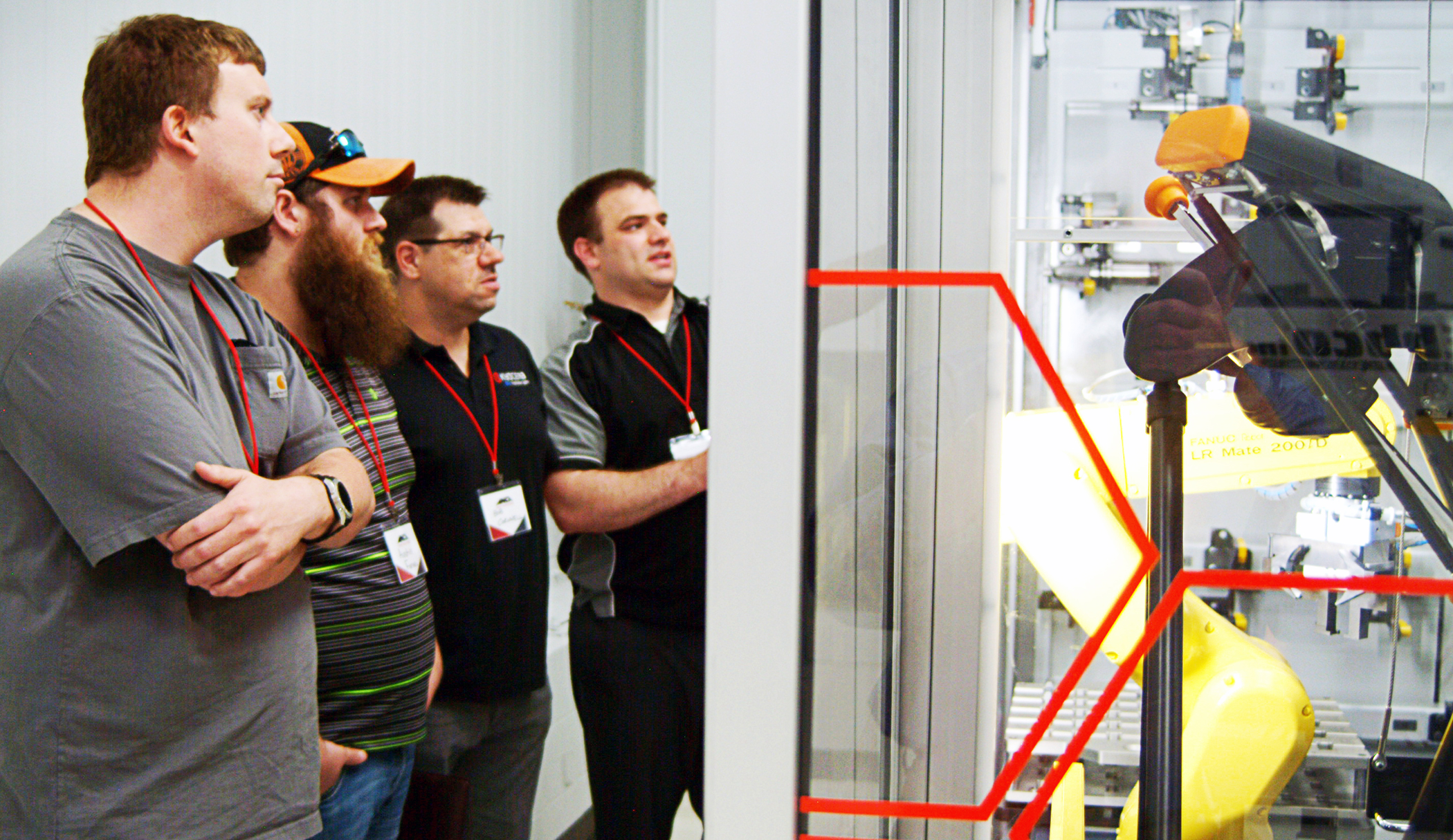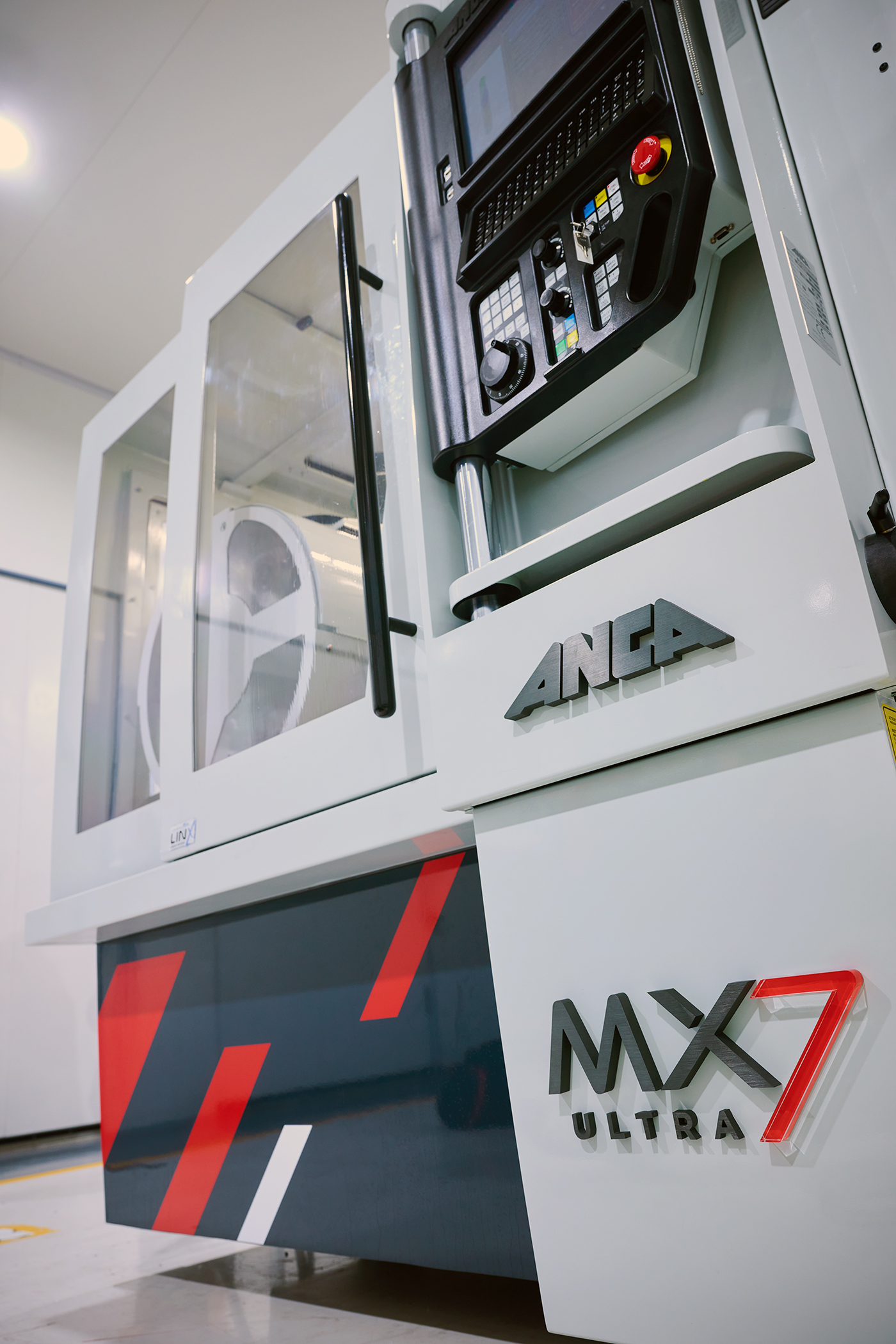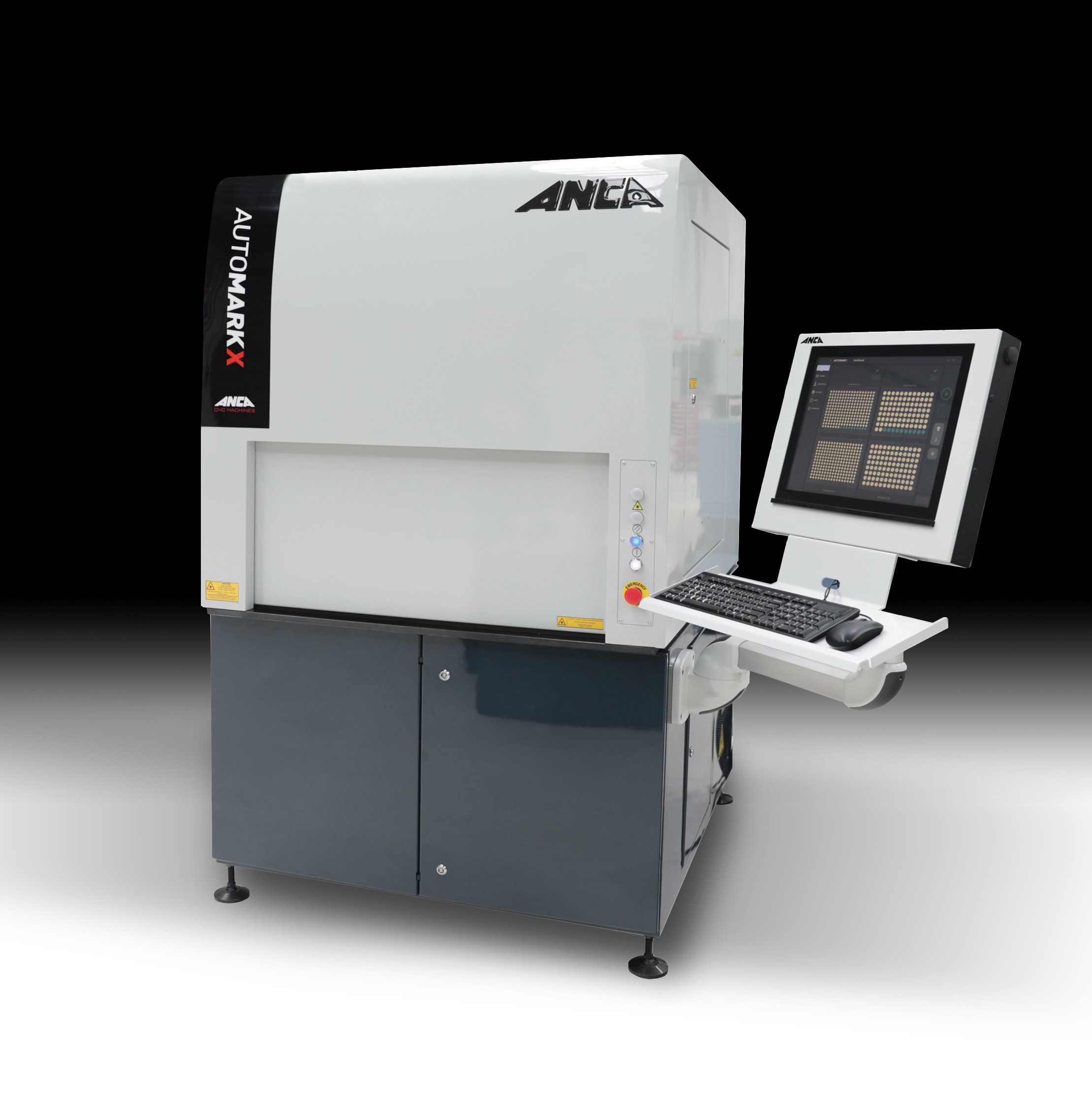
ANCA will have a Technology Days open house at its Wixom, Michigan, facility May 9 and 10.
Visitors will see world-first nanometer grinding technology in action, as well as live machine demonstrations, break-out sessions and presentations hosted by expert engineers, and plenty of networking opportunities.
“Our Technology Days have something for everyone. For those looking for information on where the industry is heading or learning what’s new at ANCA - we’ll have our technology experts on-site to discuss our latest innovations. Or, if you’re ready to network with others in the industry, we’ll have food and drinks during networking times. We hope to see everyone there,” said ANCA Inc President, Russell Riddiford.
ANCA Co-Founder Pat Boland said: “Our goal has always been to be the first to market with the latest technology. We know that if you choose ANCA, you can be confident you have the best tools to be more efficient and more accurate in your grinding.”
At the Technology Days, visitors will see the company's latest product ranges along with 3D simulation, linear drives, and laser measurement which revolutionized the cutting tool industry.
“We have always, and continue to, invest in our R&D to deliver premium machines that will future-proof your tool production,” said Riddiford.
What you will see at ANCA Inc’s Technology Days:
MX7 ULTRA

The new MX7 ULTRA can manufacture large volumes of endmills and other cutting tools of the highest accuracy in the market. A micron is already smaller than a human eye can see, and ANCA’s latest technology now offers even more precise nanometer accuracy for cutting tools.
New software, hardware and design features combine for significant advances in surface finish, accuracy, and controlled runout, to deliver batch consistency from the first ground tool to the thousandth.
“The ULTRA machine is truly market changing. It is the culmination of ANCA’s elite technology, deep industry knowledge, and customer experience in grinding,” says Thomson Mathew, ANCA product manager for the MX series and software products.
The CPX In-Process OD measurement system
The CPX in-process OD measurement system is a quality control system that monitors and controls the OD of ground blanks within a batch production.
Batch grinding on a CPX with high material removal rates and to tight tolerances is a core function of the machine, the OD measurement system takes it further with the Statistical Process Control (SPC) feature that comes standard with the OD measurement software. SPC is user defined, the tolerances along with the Cp and CpK values are constantly monitored, controlled, and reported to the user.
The OD measurement system is permanently mounted inside the machine and only called upon when required. Based on set tolerances and the frequency of measurement, accurate in-process measurement and compensation is applied to maintain the blank OD to the nominal diameter.
The system is flexible with the ability to handle multiple diameters in one setup, making it perfect for complex blank geometries/shapes and longer batch runs.
AutoMarkX laser marking

The AutoMarkX is an automatic stand-alone laser marking station replacing manual and labor-intensive processes. Automating this saves you money and by avoiding manual handling, tool quality is protected by eliminating risk of chipping. It is AIMS Ready, which means it can be used as a standalone machine but could be easily integrated to your lights out, unmanned AIMS manufacturing cell with automatic pallet transfer using AutoFetch robot.
AutoMarkX accepts up to two full pallets of tools, which means you can mark a large batch of tools unmanned. Flexible marking means the message could be etched on a single side of the shank or, using the AMX’s new rotary workholding, on opposite sides of the shank as well as at the end of tool.
This latest laser marking option is particularly useful for applications where a unique tool identification code (e.g. Datamatrix) needs to be etched on the tool. Typically etched on the shank, they risk exposure to excessive surface wear which renders them unreadable. The end of tool is the best location to etch this type of code and overcome this issue.
GCX Linear grinder for the EV revolution
The rise of electric vehicles (EVs) is here and the demand for skiving cutters has seen 30% year on year growth. The GCX Linear provides a complete solution to tap into this rapidly developing market, including the ability to produce skiving cutters, shaper cutters and regrinding of hobs. It offers advanced stand-alone software to design and optimize the tool, neatly interfaced with the gear tool package inside ANCA's renowned ToolRoom software.
The machine is designed for accuracy with features including all axes with LinX linear motors and an enhanced headstock. GCX Linear boasts a series of technologies: AEMS dressing, MTC on grinding spindle and dresser spindle, integrated gear tool measurement and direct compensation – setting the new standard for producing skiving tools that achieve the highest DIN AA quality class.
ANCA has developed a world-first integrated gear tool measurement system, which enables all the grinding-measuring-compensation to be done in the machine.
FX7 RFID and LASERULTRA
The FX7 is fitted with ANCA’s Dynamic Tool Loading System, which is ideal for customers manufacturing or regrinding a wide and varied range of tools in small to medium size batches. The tool management system with RFID links unique tool programs to the correct tool in a loader pallet. This works in conjunction with automated Schunk collet changing to allow unattended grinding of random tool diameters and types.
The FX7 robot loader also changes wheel packs based on the individual tool grinding program linked to the RFID coding. With a six-station wheel changer and the ability to change collets the ANCA FX7 with RFID is the ultimate automation package.
The FX7 is additionally fitted with new LaserUltra, for automated post process tool measurement within the grinding machine itself. Measuring cutter profile and diameter to +/-0.002mm, LaserUltra can provide compensation feedback to ensure accuracy and consistency with unattended tool grinding operations.
EDG3 for the production of PCD, carbide and HSS tools
The EDG3 is ANCA’s highly capable, low-cost solution for PCD, carbide (HM) and HSS tool manufacture and resharpening. Optimized for micro to large PCD drills, endmills and profile tools, the ANCA EDG3 is a highly versatile platform with an integrated direct-driven dual erosion and grinding spindle, allowing for supreme flexibility.
Featuring the all new ANCA Motion SparX Erosion Generator for control of the EDG (Electro Discharge Grinding) process, the EDG3 delivers unsurpassed cycle time and surface finish results on even the hardest materials.
With the latest ANCA ToolRoom suite of dedicated PCD erosion software, including ballnose, corner radius, drill and profile cycles, the ANCA EDG3 delivers outstanding value for PCD tool manufacturing.
To register for the event and for more information, visit https://machines.anca.com/News/Events/Tech-Day-USA.
Contact Details
Related Glossary Terms
- arithmetic average ( AA)
arithmetic average ( AA)
The mathematical expression denoting one of several parameters that describe surface texture (same as average roughness Ra). Average roughness is the arithmetic average height deviation of the measured surface profile from the profile centerline. See surface texture.
- collet
collet
Flexible-sided device that secures a tool or workpiece. Similar in function to a chuck, but can accommodate only a narrow size range. Typically provides greater gripping force and precision than a chuck. See chuck.
- dressing
dressing
Removal of undesirable materials from “loaded” grinding wheels using a single- or multi-point diamond or other tool. The process also exposes unused, sharp abrasive points. See loading; truing.
- electrical-discharge grinding ( EDG)
electrical-discharge grinding ( EDG)
Process similar to conventional electrical-discharge machining except a grinding-wheel type of electrode is used. See EDM, electrical-discharge machining.
- grinding
grinding
Machining operation in which material is removed from the workpiece by a powered abrasive wheel, stone, belt, paste, sheet, compound, slurry, etc. Takes various forms: surface grinding (creates flat and/or squared surfaces); cylindrical grinding (for external cylindrical and tapered shapes, fillets, undercuts, etc.); centerless grinding; chamfering; thread and form grinding; tool and cutter grinding; offhand grinding; lapping and polishing (grinding with extremely fine grits to create ultrasmooth surfaces); honing; and disc grinding.
- grinding machine
grinding machine
Powers a grinding wheel or other abrasive tool for the purpose of removing metal and finishing workpieces to close tolerances. Provides smooth, square, parallel and accurate workpiece surfaces. When ultrasmooth surfaces and finishes on the order of microns are required, lapping and honing machines (precision grinders that run abrasives with extremely fine, uniform grits) are used. In its “finishing” role, the grinder is perhaps the most widely used machine tool. Various styles are available: bench and pedestal grinders for sharpening lathe bits and drills; surface grinders for producing square, parallel, smooth and accurate parts; cylindrical and centerless grinders; center-hole grinders; form grinders; facemill and endmill grinders; gear-cutting grinders; jig grinders; abrasive belt (backstand, swing-frame, belt-roll) grinders; tool and cutter grinders for sharpening and resharpening cutting tools; carbide grinders; hand-held die grinders; and abrasive cutoff saws.
- high-speed steels ( HSS)
high-speed steels ( HSS)
Available in two major types: tungsten high-speed steels (designated by letter T having tungsten as the principal alloying element) and molybdenum high-speed steels (designated by letter M having molybdenum as the principal alloying element). The type T high-speed steels containing cobalt have higher wear resistance and greater red (hot) hardness, withstanding cutting temperature up to 1,100º F (590º C). The type T steels are used to fabricate metalcutting tools (milling cutters, drills, reamers and taps), woodworking tools, various types of punches and dies, ball and roller bearings. The type M steels are used for cutting tools and various types of dies.
- micron
micron
Measure of length that is equal to one-millionth of a meter.
- outer diameter ( OD)
outer diameter ( OD)
Dimension that defines the exterior diameter of a cylindrical or round part. See ID, inner diameter.
- polycrystalline diamond ( PCD)
polycrystalline diamond ( PCD)
Cutting tool material consisting of natural or synthetic diamond crystals bonded together under high pressure at elevated temperatures. PCD is available as a tip brazed to a carbide insert carrier. Used for machining nonferrous alloys and nonmetallic materials at high cutting speeds.
- process control
process control
Method of monitoring a process. Relates to electronic hardware and instrumentation used in automated process control. See in-process gaging, inspection; SPC, statistical process control.
- quality assurance ( quality control)
quality assurance ( quality control)
Terms denoting a formal program for monitoring product quality. The denotations are the same, but QC typically connotes a more traditional postmachining inspection system, while QA implies a more comprehensive approach, with emphasis on “total quality,” broad quality principles, statistical process control and other statistical methods.
- shank
shank
Main body of a tool; the portion of a drill or similar end-held tool that fits into a collet, chuck or similar mounting device.
- slotting machine ( shaper)
slotting machine ( shaper)
Vertical or horizontal machine that accommodates single-point, reciprocating cutting tools to shape or slot a workpiece. Normally used for special (unusual/intricate shapes), low-volume runs typically performed by broaching or milling machines. See broaching machine; mill, milling machine.
- statistical process control ( SPC)
statistical process control ( SPC)
Statistical techniques to measure and analyze the extent to which a process deviates from a set standard.
- statistical process control ( SPC)2
statistical process control ( SPC)
Statistical techniques to measure and analyze the extent to which a process deviates from a set standard.
- tap
tap
Cylindrical tool that cuts internal threads and has flutes to remove chips and carry tapping fluid to the point of cut. Normally used on a drill press or tapping machine but also may be operated manually. See tapping.

